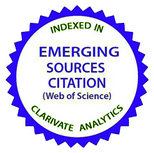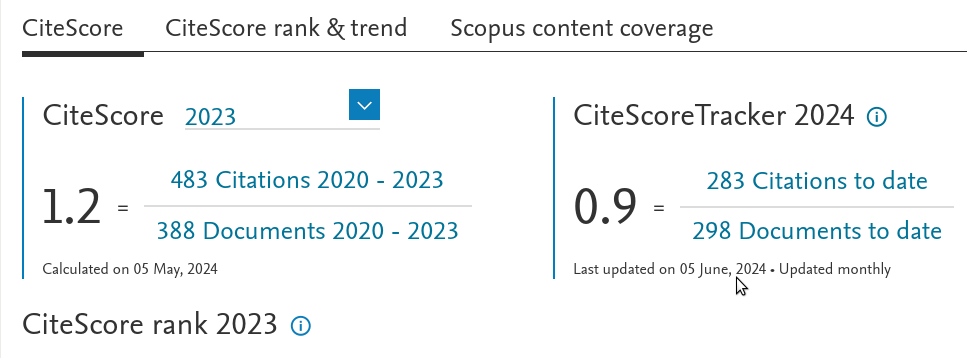Повне дослідження ядра 10C з використанням різних теоретичних підходів
DOI:
https://doi.org/10.15407/ujpe66.8.653Ключові слова:
ядерний потенцiал, потенцiал близькодiї, розподiл густини, кластерна модель, пружне розсiяння, оптична модель, модель подвiйної згорткиАнотація
Виконано детальний теоретичний аналiз властивостей ядра 10C iз застосуванням рiзних теоретичних пiдходiв для рiзних ядерних потенцiалiв i розподiлiв густини на основi простої кластерної моделi. Ми спробували пояснити новi незрозумiлi експерименти для системи 10C + 58Ni при 35,3 МеВ. Спочатку ми розглянули 13 рiзних потенцiалiв, а потiм 10 рiзних типiв розподiлу густини для ядра 10C. Запропоновано простий метод розрахунку кластерних станiв ядра 10C. Проведено порiвняння всiх теоретичних результатiв з експериментальними даними i досягнуто їх краще узгодження.
Посилання
https://www.nndc.bnl.gov/nudat2/
https://knotplot.com/brunnian/
V. Guimar˜aes, E.N. Cardozo, V.B. Scarduelli, J. Lubian, J.J. Kolata, P.D. O'Malley, D.W. Bardayan, E.F. Aguilera, E. Martinez-Quiroz, D. Lizcano, A. Garcia-Flores, M. Febbraro, C.C. Lawrence, J. Riggins, R.O. Torres-Isea, P.N. de Faria, D.S. Monteiro, E.S. Rossi, Jr., N.N. Deshmukh. Strong coupling effect in the elastic scattering of the 10C + 58Ni system near barrier. Phys. Rev. C 100, 034603 (2019).
https://doi.org/10.1103/PhysRevC.100.034603
G.R. Satchler, W.G. Love. Folding model potentials from realistic interactions for heavy-ion scattering. Phys. Rep. 55, 183 (1979).
https://doi.org/10.1016/0370-1573(79)90081-4
S.A. Goncharov, A. Izadpanah. Nucleus-nucleus potential within the semi microscopic dispersive model on the basis of a corrected folding-model potential. Phys. Atom. Nucl. 70, 18 (2007).
https://doi.org/10.1134/S1063778807010036
M. Aygun. Alternative potentials analyzing the scattering cross sections of 7,9,10,11,12,14Be isotopes from a 12C target: Proximity potentials. J. Korean Phys. Soc. 73, 1255 (2018).
https://doi.org/10.3938/jkps.73.1255
M. Aygun. A comparison of proximity potentials in the analysis of heavy-ion elastic cross sections. Ukr. J. Phys. 63, 881 (2018).
https://doi.org/10.15407/ujpe63.10.881
M. Aygun. The application of some nuclear potentials for quasielastic scattering data of the 11Li + 28Si reaction and its consequences. Turk. J. Phys. 42, 302 (2018).
https://doi.org/10.3906/fiz-1801-5
J. Blocki, J. Randrup, W.J. Swiatecki, C.F. Tsang. Proximity forces. Ann. Phys. (NY) 105, 427 (1977).
https://doi.org/10.1016/0003-4916(77)90249-4
I. Dutt, R.K. Puri. Comparison of different proximity potentials for asymmetric colliding nuclei. Phys. Rev. C 81, 064609 (2010).
https://doi.org/10.1103/PhysRevC.81.064609
W.D. Myers, W.J. Swiatecki. Nuclear masses and deformations. Nucl. Phys. 81, 1 (1966).
https://doi.org/10.1016/0029-5582(66)90639-0
H.J. Krappe, J.R. Nix, A.J. Sierk. Unified nuclear potential for heavy-ion elastic scattering, fusion, fission, and ground-state masses and deformations. Phys. Rev. C 20, 992 (1979).
https://doi.org/10.1103/PhysRevC.20.992
R. Kumar. Effect of isospin on the fusion reaction crosssection using various nuclear proximity potentials within
the Wong model. Phys. Rev. C 84, 044613 (2011).
https://doi.org/10.1103/PhysRevB.84.085435
K. Pomorski, J. Dudek. Nuclear liquid-drop model and surface-curvature effects. Phys. Rev. C 67, 044316 (2003).
https://doi.org/10.1103/PhysRevC.67.044316
I. Dutt, R.K. Puri. Role of surface energy coefficients and nuclear surface diffuseness in the fusion of heavy-ions. Phys. Rev. C 81, 047601 (2010).
https://doi.org/10.1103/PhysRevC.81.047601
R. Gharaei, V. Zanganeh, N. Wang. Systematic study of proximity potentials for heavy-ion fusion cross sections. Nucl. Phys. A 979, 237 (2018).
https://doi.org/10.1016/j.nuclphysa.2018.09.032
W. Reisdorf. Heavy-ion reactions close to the Coulomb barrier. J. Phys. G: Nucl. Part. Phys. 20, 1297 (1994).
https://doi.org/10.1088/0954-3899/20/9/004
G.L. Zhang, Y.J. Yao, M.F. Guo, M. Pan, G.X. Zhang, X.X. Liu. Comparative studies for different proximity potentials applied to large cluster radioactivity of nuclei. Nucl. Phys. A 951, 86 (2016).
https://doi.org/10.1016/j.nuclphysa.2016.03.039
A. Winther. Dissipation, polarization and fluctuation in grazing heavy-ion collisions and the boundary to the chaotic regime. Nucl. Phys. A 594, 203 (1995).
https://doi.org/10.1016/0375-9474(95)00374-A
O. Aky¨uz, A. Winter. Proceedings of the International School of Physics "Enrico Fermi", Course LXXVII, Varenna, Italy, 1979, Ed. by R.A. Broglia, C.H. Dasso, R. Richi (North-Holland, 1981), p. 492.
R.N. Sagaidak, S.P. Tretyakova, S.V. Khlebnikov, A.A. Ogloblin, N. Rowley W.H. Trzaska. Nuclear potentials for sub-barrier fusion and cluster decay in 14C, 18O + 208Pb systems. Phys. Rev. C 76, 034605 (2007).
https://doi.org/10.1103/PhysRevC.76.034605
P.R. Christensen, A. Winther, The evidence of the ion-ion potentials from heavy ion elastic scattering. Phys. Lett. B 65, 19 (1976).
https://doi.org/10.1016/0370-2693(76)90524-4
H. Ngˆo, C. Ngˆo. Calculation of the real part of the interaction potential between two heavy ions in the sudden approximation. Nucl. Phys. A 348, 140 (1980).
https://doi.org/10.1016/0375-9474(80)90550-3
V. Yu Denisov. Interaction potential between heavy ions. Phys. Lett. B 526, 315 (2002).
https://doi.org/10.1016/S0370-2693(01)01513-1
M. Aygun. A comprehensive analysis of elastic scattering of 14N projectile on 7Li, 9Be, 11B, 12C, 16O, 26Mg, 28Si, 40Ca, 56Fe, 59Co, 60,62Ni, 70,74Ge, 90Zr, 112Cd, 118Sn, 159Tb and 197Au at various incident energies. Chin. J. Phys. 55, 2559 (2017).
https://doi.org/10.1016/j.cjph.2017.09.016
M. Aygun. Analysis with SDHO and RMF density distributions of elastic scattering cross-sections of oxygen isotopes(16−18O) by various target nuclei. Int. J. Mod. Phys. E 27, 1850055 (2018).
https://doi.org/10.1142/S0218301318500556
M. Aygun. Double-folding analysis of the 6Li + 58Ni reaction using the ab initio density distribution. Eur. Phys. J. A 48, 145 (2012).
https://doi.org/10.1140/epja/i2012-12145-y
M. Aygun, Y. Kucuk, I. Boztosun, A.A. Ibraheem. Microscopic few-body and Gaussian-shaped density distributions
for the analysis of the 6He exotic nucleus with different target nuclei. Nucl. Phys. A 848, 245 (2010).
https://doi.org/10.1016/j.nuclphysa.2010.09.005
M. Aygun. A comprehensive description of 19F elastic scattering by 12C, 16O, 66Zn, 159Tb, and 208Pb target nuclei. Braz. J. Phys. 49, 760 (2019).
https://doi.org/10.1007/s13538-019-00680-7
T. Ulucay, M. Aygun. A comprehensive description of elastic scattering angular distributions for eight different density distribution of 32S nucleus. Rev. Mex. Fis. 66, 336 (2020).
https://doi.org/10.31349/RevMexFis.66.336
https://www.phy.anl.gov/theory/research/density/
C. Ngˆo, B. Tamain, M. Beiner, R.J. Lombard, D. Mas, H.H. Deubler. Properties of heavy ion interaction potentials calculated in the energy density formalism. Nucl. Phys. A 252, 237 (1975).
https://doi.org/10.1016/0375-9474(75)90614-4
R.K. Gupta, D. Singh, W. Greiner. Semiclassical and microscopic calculations of the spin-orbit density part of the Skyrme nucleus-nucleus interaction potential with temperature effects included. Phys. Rev. C 75, 024603 (2007).
https://doi.org/10.1103/PhysRevC.75.024603
O.N. Ghodsi, F. Torabi. Comparative study of fusion barriers using Skyrme interactions and the energy density functional. Phys. Rev. C 92, 064612 (2015).
https://doi.org/10.1103/PhysRevC.92.064612
R.K. Gupta, D. Singh, R. Kumar, W. Greiner. Universal functions of nuclear proximity potential for Skyrme nucleus-nucleus interaction in a semiclassical approach. J. Phys. G: Nucl. Part. Phys. 36, 075104 (2009).
https://doi.org/10.1088/0954-3899/36/7/075104
L.C. Chamon, B.V. Carlson, L.R. Gasques, D. Pereira, C. De Conti, M.A.G. Alvarez, M.S. Hussein, M.A. Cˆandido Ribeiro, E.S. Rossi, Jr., C.P. Silva. Toward a global description of the nucleus-nucleus interaction. Phys. Rev. C 66, 014610 (2002).
https://doi.org/10.1103/PhysRevC.66.014610
W.M. Seif, H. Mansour. Systematics of nucleon density distributions and neutron skin of nuclei. Int. J. Mod. Phys. E 24, 1550083 (2015).
https://doi.org/10.1142/S0218301315500834
M. Ismail, W.M. Seif, W.M. Tawfik, A.M. Hussein. Effect of choosing the Qa-values and daughter density distributions on the magic numbers predicted by a decays. Ann. Physics 406, 1 (2019).
https://doi.org/10.1016/j.aop.2019.03.020
C. Jouanne, V. Lapoux, F. Auger, N. Alamanos, A. Drouart, A. Gillibert, G. Lobo, A. Musumarra, L. Nalpas, E. Pollacco, J.-L. Sida, M. Trotta, Y. Blumenfeld, E. Khan, T. Suomij¨arvi, T. Zerguerras, P. RousselChomaz, H. Savajols, A. Lagoyannis, A. Pakou. Structure of low-lying states of 10,11C from proton elastic and inelastic scattering. Phys. Rev. C 72, 014308 (2005).
https://doi.org/10.1103/PhysRevC.72.014308
H. Schechter, L.F. Canto. Proximity formulae for folding potentials. Nucl. Phys. A 315, 470 (1979).
https://doi.org/10.1016/0375-9474(79)90623-7
S.A. Moszkowski. Energy dependence of the ion-ion potential with a simplified energy density method. Nucl. Phys. A 309, 273 (1978).
https://doi.org/10.1016/0375-9474(78)90548-1
M. El-Azab Farid, M.A. Hassanain. Density-independent folding analysis of the 6,7Li elastic scattering at intermediate energies. Nucl. Phys. A 678, 39 (2000). https://doi.org/10.1016/S0375-9474(00)00313-4
M. Aygun. A comparative analysis of the density distributions and the structure models of 9Li. Pramana - J. Phys. 88, 53 (2017).
M. Aygun, Z. Aygun. A theoretical study on different cluster configurations of the 9Be nucleus by using a simple cluster model. Nucl. Sci. Tech. 28, 86 (2017). https://doi.org/10.1007/s41365-017-0239-2
M. Aygun. A comprehensive study on the internal structure and the density distribution of 12Be. Rev. Mex. Fis. 62, 336 (2016).
M. Aygun. A comprehensive theoretical analysis of 22Ne nucleus by using different density distributions, different nuclear potentials and different cluster approach. Int. J. Mod. Phys. E 29, 1950112 (2020). https://doi.org/10.1142/S021830131950112X
A.K. Chaudhuri. Density distribution of 11Li and proton elastic scattering from 9Li and 11Li. Phys. Rev. C 49, 1603 (1994). https://doi.org/10.1103/PhysRevC.49.1603
R.A. Rego. Closed-form expressions for cross sections of exotic nuclei. Nucl. Phys. A 581, 119 (1995). https://doi.org/10.1016/0375-9474(94)00424-L
R.J. Charity, T.D. Wiser, K. Mercurio, R. Shane, L.G. Sobotka, A.H. Wuosmaa, A. Banu, L. Trache, R.E. Tribble. Continuum spectroscopy with a 10C beam: Cluster structure and three-body decay. Phys. Rev. C 80, 024306 (2009). https://doi.org/10.1103/PhysRevC.80.024306
A. Ozawa, I. Tanihata, T. Kobayashi, Y. Sugahara, O. Yamakawa, K. Omata, K. Sugimoto, D. Olson, W. Christie, H. Wieman. Interaction cross sections and radii of light nuclei. Nucl. Phys. A 608, 63 (1996). https://doi.org/10.1016/0375-9474(96)00241-2
I.J. Thompson. Coupled reaction channels calculations in nuclear physics. Comput. Phys. Rep. 7, 167 (1988). https://doi.org/10.1016/0167-7977(88)90005-6
J. Cook. DFPOT - A program for the calculation of double folded potentials. Commun. Comput. Phys. 25, 125 (1982). https://doi.org/10.1016/0010-4655(82)90029-7
Downloads
Опубліковано
Як цитувати
Номер
Розділ
Ліцензія
Ліцензійний Договір
на використання Твору
м. Київ, Україна
Відповідальний автор та співавтори (надалі іменовані як Автор(и)) статті, яку він (вони) подають до Українського фізичного журналу, (надалі іменована як Твір) з одного боку та Інститут теоретичної фізики імені М.М. Боголюбова НАН України в особі директора (надалі – Видавець) з іншого боку уклали даний Договір про таке:
1. Предмет договору.
Автор(и) надає(ють) Видавцю безоплатно невиключні права на використання Твору (наукового, технічного або іншого характеру) на умовах, визначених цим Договором.
2. Способи використання Твору.
2.1. Автор(и) надає(ють) Видавцю право на використання Твору таким чином:
2.1.1. Використовувати Твір шляхом його видання в Українському фізичному журналі (далі – Видання) мовою оригіналу та в перекладі на англійську (погоджений Автором(ами) і Видавцем примірник Твору, прийнятого до друку, є невід’ємною частиною Ліцензійного договору).
2.1.2. Переробляти, адаптувати або іншим чином змінювати Твір за погодженням з Автором(ами).
2.1.3. Перекладати Твір у випадку, коли Твір викладений іншою мовою, ніж мова, якою передбачена публікація у Виданні.
2.2. Якщо Автор(и) виявить(лять) бажання використовувати Твір в інший спосіб, як то публікувати перекладену версію Твору (окрім випадку, зазначеного в п. 2.1.3 цього Договору); розміщувати повністю або частково в мережі Інтернет; публікувати Твір в інших, у тому числі іноземних, виданнях; включати Твір як складову частину інших збірників, антологій, енциклопедій тощо, то Автор(и) мають отримати на це письмовий дозвіл від Видавця.
3. Територія використання.
Автор(и) надає(ють) Видавцю право на використання Твору способами, зазначеними у п.п. 2.1.1–2.1.3 цього Договору, на території України, а також право на розповсюдження Твору як невід’ємної складової частини Видання на території України та інших країн шляхом передплати, продажу та безоплатної передачі третій стороні.
4. Строк, на який надаються права.
4.1. Договір є чинним з дати підписання та діє протягом усього часу функціонування Видання.
5. Застереження.
5.1. Автор(и) заявляє(ють), що:
– він/вона є автором (співавтором) Твору;
– авторські права на даний Твір не передані іншій стороні;
– даний Твір не був раніше опублікований і не буде опублікований у будь-якому іншому виданні до публікації його Видавцем (див. також п. 2.2);
– Автор(и) не порушив(ли) права інтелектуальної власності інших осіб. Якщо у Творі наведені матеріали інших осіб за виключенням випадків цитування в обсязі, виправданому науковим, інформаційним або критичним характером Твору, використання таких матеріалів здійснене Автором(ами) з дотриманням норм міжнародного законодавства і законодавства України.
6. Реквізити і підписи сторін.
Видавець: Інститут теоретичної фізики імені М.М. Боголюбова НАН України.
Адреса: м. Київ, вул. Метрологічна 14-б.
Автор: Електронний підпис від імені та за погодження всіх співавторів.

















